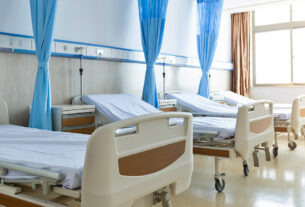Orthopedic Devices Market Overview:
The global orthopedic devices market is expected to expand at a compound annual growth rate (CAGR) of 4-6% over the next five years. Key factors driving this growth include the rising prevalence of orthopedic conditions, an aging population, advancements in orthopedic technologies, and an increase in sports-related injuries. Furthermore, the growing popularity of minimally invasive procedures and the rising demand for joint replacement surgeries are also contributing to the market’s upward trajectory.
Download Sample Copy: https://meditechinsights.com/orthopedic-devices-market/request-sample/
Orthopedic devices encompass a variety of products, including joint implants, trauma devices, spine devices, and orthobiologics, all designed to treat musculoskeletal conditions. These devices play a crucial role in enhancing mobility and improving the quality of life for patients with conditions such as arthritis, osteoporosis, and fractures. There is also a growing demand for customized and 3D-printed implants, as patients increasingly seek personalized treatment options that offer better results and quicker recovery.
Competitive Landscape Analysis
Key players in the global orthopedic devices include Zimmer Biomet, Stryker Corporation, DePuy Synthes (Johnson & Johnson), Smith & Nephew, Medtronic, Arthrex, Globus Medical (NuVasive Inc.), Orthofix, B. Braun Melsungen AG, and DJO Global, among others. Strategic acquisitions and product launch are two of the key strategies adopted by market players to strengthen their market position.
Growth Drivers:
Aging Population: The global aging population is one of the primary drivers of the orthopedic devices market. As people age, they become more prone to musculoskeletal conditions such as arthritis, osteoporosis, and fractures. These conditions require orthopedic interventions, such as joint replacements, spinal surgeries, and other treatments, which in turn drives the demand for orthopedic devices.
Rising Prevalence of Orthopedic Disorders: Conditions like osteoarthritis, scoliosis, spinal deformities, and sports-related injuries are becoming more prevalent due to sedentary lifestyles, increased physical activity, and the aging population. This increases the demand for orthopedic devices like joint replacements, braces, supports, and surgical tools.
Advancements in Technology: Technological innovations in materials, design, and manufacturing processes are making orthopedic devices more effective and durable. For instance, the use of 3D printing for customized implants, robotics-assisted surgeries, and smart implants (like those with sensors) are revolutionizing the industry. This contributes to the growth of the market by improving patient outcomes and reducing recovery times.
Improved Healthcare Infrastructure: The expansion and improvement of healthcare infrastructure, particularly in emerging economies, is enabling greater access to orthopedic care. Increased healthcare spending and the adoption of advanced medical technologies in hospitals and clinics globally are helping to boost the demand for orthopedic devices.
Minimally Invasive Surgery: Minimally invasive surgery (MIS) techniques, which are often used for orthopedic procedures, reduce recovery time and improve outcomes for patients. The growing preference for MIS is increasing the demand for specialized orthopedic instruments and devices designed for these procedures.
Rising Sports Participation: As the number of people participating in recreational and professional sports continues to grow, the incidence of sports-related injuries is increasing. This has led to higher demand for orthopedic devices such as braces, supports, and repair implants.
Rising Healthcare Expenditure: Increased government spending and private investment in healthcare systems around the world are allowing for better access to advanced medical treatments, including orthopedic surgeries and devices. This also supports research and development of new, innovative orthopedic solutions.
Download Sample Copy: https://meditechinsights.com/orthopedic-devices-market/request-sample/
Challenges:
High Costs of Orthopedic Devices: While orthopedic devices have advanced in terms of technology, they often come with high price tags, which can be a barrier for both patients and healthcare systems, particularly in developing regions. The cost of advanced surgical procedures and devices can be prohibitive for some, limiting access to necessary treatments.
Regulatory Hurdles: The orthopedic devices market is highly regulated by authorities such as the FDA (Food and Drug Administration) in the U.S. and the European Medicines Agency (EMA) in Europe. The approval process for new devices can be lengthy and expensive, which may delay the entry of innovative products into the market and limit the pace of growth.
Risk of Complications and Failure: Despite technological advancements, orthopedic devices, especially implants like artificial joints, can sometimes fail or cause complications. This can lead to patient dissatisfaction, prolonged recovery times, and the need for corrective surgeries, which can undermine the effectiveness and reputation of certain devices.
Lack of Skilled Professionals: The growing complexity of orthopedic surgeries and devices requires highly skilled surgeons and technicians. In some regions, there may be a shortage of qualified healthcare professionals capable of performing advanced orthopedic procedures, which can limit the adoption and effectiveness of new devices.
Market Fragmentation and Competition: The orthopedic devices market is highly competitive, with numerous players offering a wide range of products. This fragmentation, coupled with price sensitivity in some regions, can make it challenging for companies to differentiate their products and maintain consistent market share.
Economic Barriers in Low-Income Regions: In many low- and middle-income countries, economic constraints can limit the accessibility of advanced orthopedic treatments and devices. Despite rising healthcare expenditure globally, many regions still struggle to afford the costs associated with modern orthopedic care.
Concerns over Longevity of Devices: While many orthopedic devices, like joint replacements, have improved in terms of longevity, they still have a finite lifespan. This can require patients to undergo revision surgeries after a certain number of years, which places additional strain on healthcare systems and may reduce patient satisfaction.
Increasing Regulatory Scrutiny: There is an increasing trend toward stricter regulatory oversight, particularly following concerns over device safety and effectiveness (e.g., metal-on-metal hip implants). This can increase development costs and lead to additional challenges in product approval.
Technological Advancements, Aging Demographics, and Rising Demand for Joint Replacements Fuel Growth in the Orthopedic Devices Market
The orthopedic devices market is experiencing robust growth, driven by cutting-edge innovations such as 3D printing, robotics, and AI-driven surgical technologies. These breakthroughs are improving surgical precision, boosting success rates, and shortening recovery times, all of which contribute to better patient outcomes. The aging global population is a major factor propelling this growth, particularly in the area of joint replacements, as older adults increasingly require orthopedic interventions. Alongside this, a surge in sports injuries across all age groups is further driving demand for orthopedic devices. Emerging markets are also seeing rapid expansion in this sector, fueled by rising healthcare investments and enhanced access to advanced medical treatments.
Shift Toward Ambulatory Surgery Centers (ASCs) Accelerates:
The transition of orthopedic surgeries from traditional hospital settings to ambulatory surgery centers (ASCs) has gained significant momentum, particularly following the COVID-19 pandemic. ASCs provide a more cost-effective, efficient, and patient-friendly alternative for orthopedic procedures, including joint replacements and minimally invasive surgeries. In 2023, Stryker reported that 12-15% of its large joint surgeries were performed in ASCs, up from 10% in 2022. This trend is being driven by hospitals increasingly investing in ASC infrastructure, while both payers and patients seek lower-cost alternatives. As a result, the volume of orthopedic procedures performed in ASCs is expected to grow rapidly in the coming years.
Browse Full Report: https://meditechinsights.com/orthopedic-devices-market/
About Medi-Tech Insights;
Medi-Tech Insights is a healthcare-focused business research & insights firm. Our clients include Fortune 500 companies, blue-chip investors & hyper-growth start-ups. We have completed 100+ projects in Digital Health, Healthcare IT, Medical Technology, Medical Devices & Pharma Services in the areas of market assessments, due diligence, competitive intelligence, market sizing and forecasting, pricing analysis & go-to-market strategy. Our methodology includes rigorous secondary research combined with deep-dive interviews with industry-leading CXO, VPs, and key demand/supply side decision-makers.
Contact:
Ruta Halde
Associate, Medi-Tech Insights
+32 498 86 80 79

